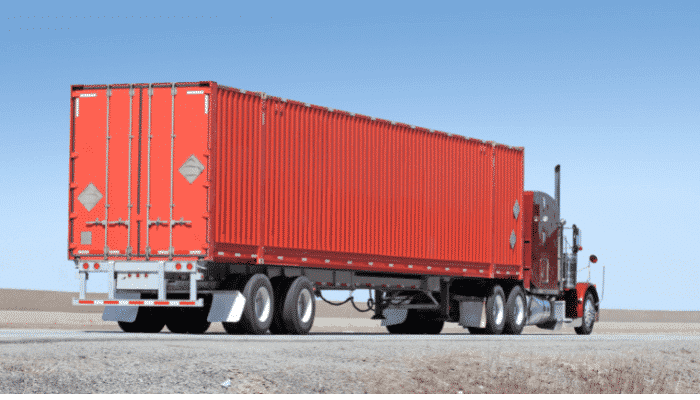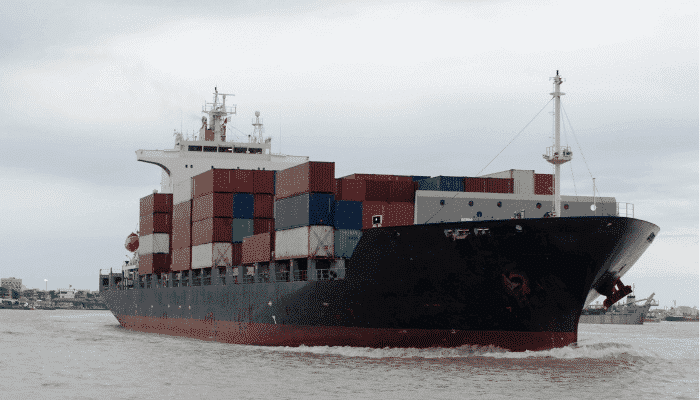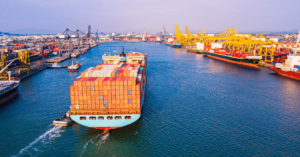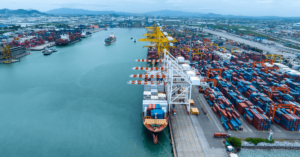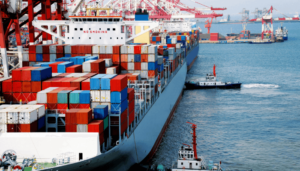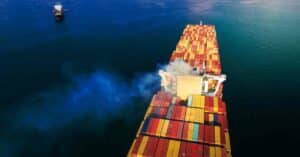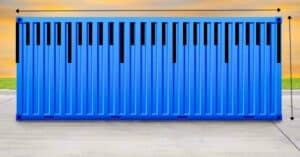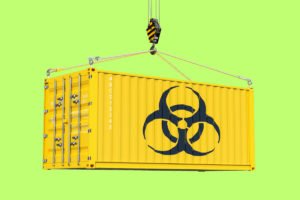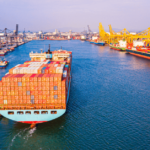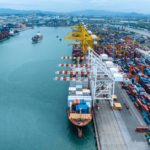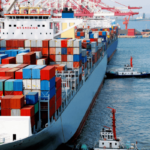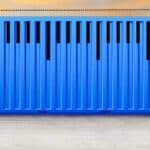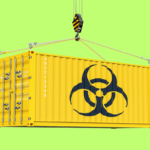What is Full Truckload in Shipping?
Overland carriage is an integral part of any type of transport, be it by sea or air. While we tend to pay more attention to the main leg of the transport (the part of a journey that takes up the most time), the overland carriage to the port by road or rail plays a very important role as well.
Full truckload is also known by the acronym FTL. What is a full truckload? When a single, dedicated truck is used to haul a specific cargo, it is called an FTL. This is usually the case when a shipper has to send goods to his customer or another location and the volume is large enough to fill a truckload.
Typically, FTL is the transportation of a single type of good by truck. Full truckload is also used in cases where the shipper has more than one type of good to transport, but they are safe to be transported together.
While cereals and pulses can go together inside a container, transportation of soaps with food items would be a strict no-no in full truckloads.
A full truckload is usually the carriage of a single type of cargo. The haulage could be by a general purpose (GP) container (also called a DV or Dry Van), a flatbed, a refrigerated container, etc. Let us take a quick look at the equipment here.
General Purpose or GP Container
The normal freight container with floor, walls, roof, and 2 lockable doors is called the general-purpose container. These are also known as Dry Vans (DV). It could be a 20’ or a 40’ container.
Flatbed
A flatbed does not have walls or a rigid roof. This open, platform-type equipment is often used to transport cargo of an odd size.
Refrigerated Container or Reefer
Refrigerated containers are temperature-controlled and used for the transport of temperature-sensitive goods such as food items, pharmaceutical drugs, etc.
Less-than Truck Load (LTL)
Less-than Truck Load (LTL), on the other hand, is the transport of several smaller shipments by a container. In this case, the freight operator consolidates several LTL shipments from different shippers to fill a container.
Multiple shippers share the space inside a container to save on cost or when the weight of their cargo is much less than the weight-bearing capacity of a full truck. LTL freight is used when the space of the full truck is not needed for the transport of a shipment.
What Type of Goods are Transported by Full Truckload?
As we have seen earlier in this article, full truckloads are suitable for transporting homogenous products. There may be exceptions to this, where different types of goods are transported together as a full truckload. However, when different types of goods are sent together as FTL, care has to be taken that they are compatible for transport in the same container.
When shippers have to transport certain goods that cannot be mixed with other types of goods, they prefer to ship them as FTL. Goods that are temperature-sensitive are ideally sent as FTL.
Other types of goods that are usually transported as full truckloads are bulk as well as break-bulk cargo.
When is a Full Truckload Used?
Full truckloads are preferred by shippers when they have large enough volumes of cargo for transporting from one location to another. Normally, when the volume of shipment is more than half or close to a full container, shippers use a full container to truck it to its destination. As mentioned above, when certain goods that cannot be mixed with other cargo have to be transported, a full container is used.
Other instances when full containers are used is when the shipper needs his cargo to reach its destination quickly. Full truckloads are normally used for time-sensitive shipments even if the volume is less than a container load.
Advantages of Shipping FTL
The advantages of shipping goods as full truckloads are as follows:
When the volume of goods for shipment is more than half or close to a truckload, it is economical to hire the full container. Shippers also benefit from the favorable rates that are offered for full truckloads by transporters.
A full truckload typically means a single consignment from a shipper to the consignee. Such shipments can be stacked and packed inside a container according to the shipper’s specifications to prevent damage to goods during transit. This is considered safer when compared with sending goods as LCL shipments.
FTL involves less handling when compared with LCL. Handling is usually at the point of loading and the final destination. This also reduces the chance of damage or subsequent loss to the goods.
Full truckloads normally operate from point to point and there are no stops en-route for discharge or intake of other goods. Hence, they reach their destination faster than LCL cargo.
Disadvantages of Shipping FTL
When full truckload transport is used for moving less-than container loads, it can result in damage of the goods if not packed and stacked carefully. The goods will have to be stacked and positioned correctly so that they do not move about inside the container during handling or transport.
FTL can only be used for the transport of homogenous cargo or those that are compatible.
The cost and benefit of transporting FTL have to be analyzed and understood fully. A comparison study with figures of shipping less-than truckload is also crucial. Failure to follow this can result in unnecessary extra costs.
Bottomline
Carrying out due diligence checks prior to booking your cargo and following best practice measures is important in the field of logistics and it naturally applies to shipping cargo as FTL. Being aware of the current market rates for the transport of goods and maintaining an effective communication channel with transporters is important for getting the best rates and terms of transport.
Plan well and plan consistently for assured capacity and for getting the best rates from transporters. Ensure that your cargo is packed well.
Mostly for transporting FTL, loading will be the responsibility of the shipper. Hence, make sure that the cargo is packed and stacked well inside the container. This becomes all the more crucial when there is damage to the cargo.
In such cases, the transporter cannot be held liable for the damage if it is proved that the cargo has been packed and stacked carelessly without following the norms of stuffing a container effectively.
You might also like to read:
- 16 Types of Container Units and Designs for Shipping Cargo
- What Is A Cargo Manifest In Shipping?
- 8 Major Types of Cargo Transported Through the Shipping Industry
- Who is a Container Surveyor?
- 10 Things to Check After Cargo Completion on Container Ships
Disclaimer: The authors’ views expressed in this article do not necessarily reflect the views of Marine Insight. Data and charts, if used, in the article have been sourced from available information and have not been authenticated by any statutory authority. The author and Marine Insight do not claim it to be accurate nor accept any responsibility for the same. The views constitute only the opinions and do not constitute any guidelines or recommendation on any course of action to be followed by the reader.
The article or images cannot be reproduced, copied, shared or used in any form without the permission of the author and Marine Insight.
Do you have info to share with us ? Suggest a correction

About Author
Hari Menon is a Freelance writer with close to 20 years of professional experience in Logistics, Warehousing, Supply chain, and Contracts administration. An avid fitness freak, and bibliophile, he loves travelling too.
Latest Maritime law Articles You Would Like:
Latest News
- What are Logistics Risks?
- How Port and Terminal Operators Can Control Emissions?
- Minimum Quantity Commitment (MQC) and Liquidated Damages in Container Shipping: Concept and Relevance
- MARPOL (The International Convention for Prevention of Marine Pollution For Ships): The Ultimate Guide
- The Ultimate Shipping Container Dimensions Guide
- A Comprehensive Overview of IMDG Code for Shipping Dangerous Goods
Subscribe To Our Newsletters
By subscribing, you agree to our Privacy Policy and may receive occasional deal communications; you can unsubscribe anytime.



